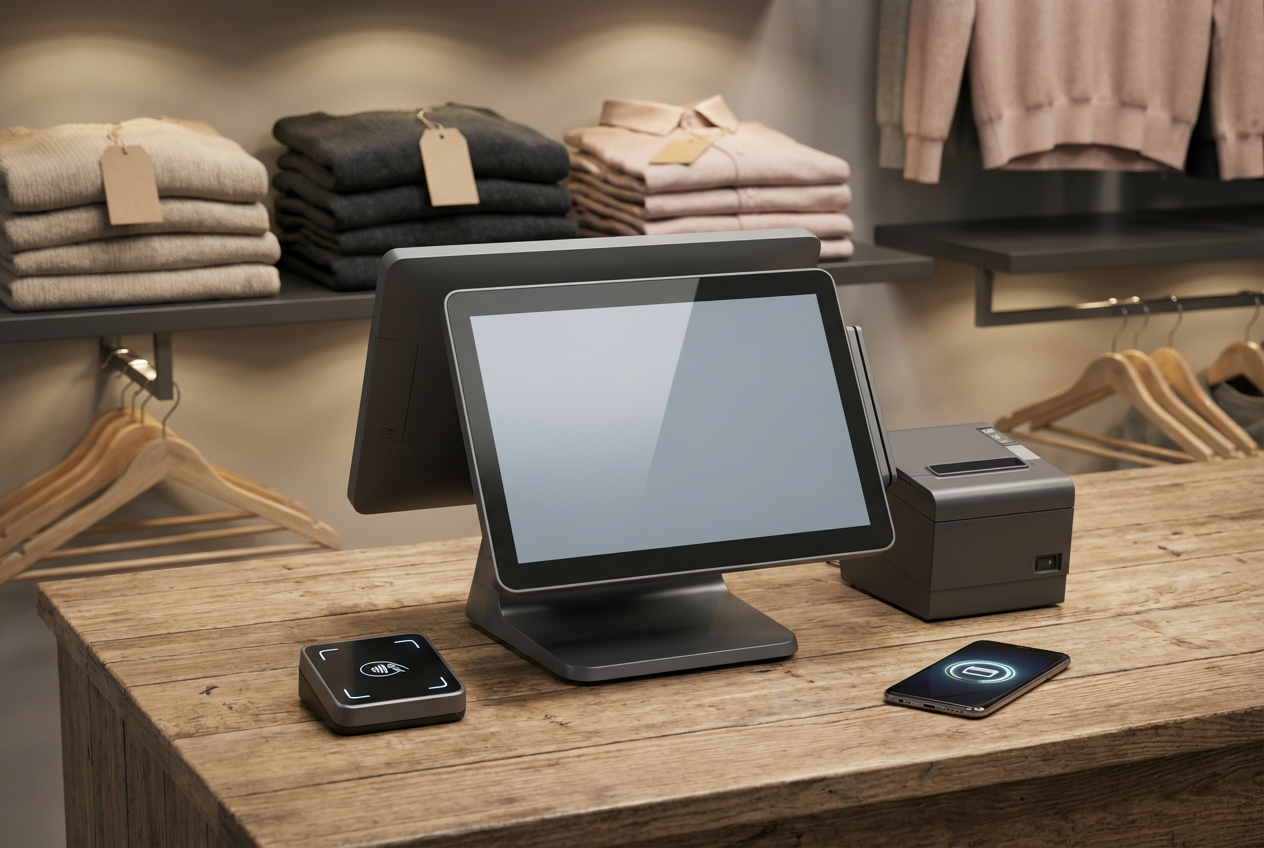A careful blend of strategy, compliance, and technology are factors that will decide a successful gun store eCommerce platform launch. The firearms industry is unique, with stringent regulations and specific customer needs, making the process of establishing an online presence both challenging and rewarding. This guide aims to provide a comprehensive roadmap for aspiring online gun store owners, covering everything from legal considerations and choosing the right eCommerce platform to inventory management and customer engagement.
Highlights
- Define your project requirements clearly to find a development partner with the right expertise.
- Evaluate potential partners’ technical skills and problem-solving abilities through interviews or coding samples.
- Ensure effective communication, transparency, and a good cultural fit with your development partner for a successful collaboration.
Understand Legal and Regulatory Requirements for a Gun Store eCommerce Platform
To successfully launch a gun store eCommerce platform, you must thoroughly understand legal and regulatory frameworks to ensure compliance and operational legitimacy.
Key considerations include:
Federal Regulations
- Federal Firearms License (FFL): Determine if you need an FFL to sell firearms online. Most gun sales across state lines or involving commercial activities require an FFL.
- ATF Regulations: Familiarize yourself with the regulations set forth by the Bureau of Alcohol, Tobacco, Firearms and Explosives (ATF) regarding online firearm sales, record-keeping, and shipping requirements.
State and Local Laws
- State Laws: Research and comply with state-specific laws regarding online gun sales, including licensing requirements, waiting periods, and restrictions on certain types of firearms.
- Local Regulations: Check local ordinances that may impose additional requirements on gun sales within your area of operation.
Age Verification and Background Checks
- Age Verification: Implement robust age verification processes to ensure compliance with federal and state laws regarding the sale of firearms to minors.
- Background Checks: Understand the requirements for conducting background checks on buyers, which are mandatory for most firearm purchases.
Data Security and Privacy
- Secure Transactions: Ensure your eCommerce platform uses secure payment gateways and encryption to protect customer data during transactions.
- Privacy Policies: Develop and publish clear privacy policies that comply with relevant data protection laws and outline how customer information is collected, used, and stored.
Step-by-step Process to Launch a Successful Gun Store eCommerce Platform
Step 1: Market Research and Finding Your Niche
Conduct thorough market research to lay the foundation for your gun store eCommerce.
Identify your target audience by considering factors like age, gender, location, and interests. Understand their purchasing behaviors and preferences for firearms and accessories. Analyze competitors to find their strengths and weaknesses. Identify market gaps you can fill.
►►► Optimal solution set for businesses: Multi store POS, Next-gen POS, Inventory Management Software (MSI), Self Service, Automation, Backorders
Step 2: Building Your Brand
Building a strong brand is crucial for standing out in the crowded eCommerce market. Your brand should reflect your values, mission, and products’ unique selling points.
Start by defining your brand identity, including your logo, color scheme, and typography. These elements should be consistent across all your marketing materials and online presence.
Create a compelling brand story that resonates with your target audience. Share the history of your business, your passion for firearms, and what sets you apart from competitors. This narrative should be reflected in your website content, social media posts, and customer communications.
Step 3: Website Development
A robust eCommerce website is the backbone of your online gun store. Choose a platform that supports the specific needs of the firearms industry, such as Shopify. These platforms offer customizable templates, secure payment gateways, and scalability to grow with your business.
Ensure your website is user-friendly with intuitive navigation and responsive design. Product pages should have high-quality images, detailed descriptions, and specifications. Implement a search function and filters to help customers find products quickly.
Security is paramount for an eCommerce site, especially one dealing with firearms. Use SSL certificates to encrypt data and protect customer information. Integrate secure payment gateways that comply with industry standards, such as PCI-DSS.
Optimize your website for search engines (SEO) to increase visibility and attract organic traffic. Use relevant keywords, create valuable content, and build backlinks from reputable sites. Additionally, ensure your website loads quickly, as slow loading times can deter potential customers.
Step 4: Legal and Compliance Setup
Compliance with legal and regulatory requirements is critical for an online gun store. Start by researching federal, state, and local laws governing the sale of firearms. This includes obtaining the necessary licenses and permits to operate legally. The Bureau of Alcohol, Tobacco, Firearms, and Explosives (ATF) provides guidelines and resources for firearm sellers.
Implement age verification processes to ensure that buyers meet the legal age requirements. This can include using third-party services that verify customer age and identity. Moreover, develop a clear and comprehensive privacy policy to protect customer data and comply with regulations like the General Data Protection Regulation (GDPR).
Step 5: Inventory and Supply Chain Management
Efficient inventory and supply chain management are vital for the success of your eCommerce gun store. ConnectPOS is an excellent solution for managing your inventory seamlessly across multiple sales channels. This cloud-based POS system offers real-time inventory tracking, allowing you to monitor stock levels, manage orders, and avoid overselling.
ConnectPOS integrates with popular eCommerce platforms like Magento. This synchronization ensures accurate stock information for your customers. Any changes in inventory levels, such as sales or returns, are updated in real time.
Moreover, ConnectPOS offers robust reporting and analytics tools. These features help you understand sales trends and identify best-selling products. Use this data to make informed decisions about restocking. By using ConnectPOS, you can streamline inventory management, reduce operational costs, and enhance customer satisfaction.
Step 6: Implement Live Chat for Your Gun Store Customers
Implementing live chat on your website can significantly enhance the customer experience by providing real-time assistance. Live chat allows customers to ask questions, seek product recommendations, and resolve issues instantly, increasing the likelihood of a sale.
Choose a reliable live chat software that integrates seamlessly with your eCommerce platform. Look for features such as automated greetings, pre-chat forms, and chat history, which can help you provide personalized and efficient support. Train your customer service team to respond promptly and professionally to live chat inquiries.
Step 7: Maximize the Effectiveness of “Call to Action”
Effective calls to action (CTAs) are essential for driving conversions on your eCommerce website. A CTA prompts visitors to take specific actions, such as making a purchase, signing up for a newsletter, or contacting customer support. To maximize their effectiveness, CTAs should be clear, compelling, and strategically placed.
Use action-oriented language that communicates the benefits of taking the desired action. For example, instead of “Submit,” use “Get Started” or “Shop Now.” Highlight the value proposition, such as “Free Shipping on Orders Over $100” or “Exclusive Discounts for Members.”
Step 8: Marketing and Launch Strategy
A well-executed marketing and launch strategy is crucial for the success of your gun store eCommerce platform. Start by creating a comprehensive marketing plan that outlines your goals, target audience, budget, and promotional tactics.
Utilize a mix of digital marketing channels to reach potential customers. Search engine optimization (SEO) is essential for driving organic traffic to your website. Conduct keyword research to identify relevant terms and create high-quality content that addresses the needs and interests of your audience.
Email marketing is another effective tool for promoting your gun store. Build an email list by offering incentives such as discounts or exclusive content. Send regular newsletters to keep subscribers informed about new products, promotions, and industry news.
Coordinate your launch strategy to create buzz and excitement. Offer limited-time discounts, host virtual events, and collaborate with influencers in the firearms industry to reach a wider audience. Track the performance of your marketing efforts and adjust your strategy based on data insights to maximize your reach and impact.
How to Select the Ideal Platform Development Partner?
Choosing the right development partner can make or break your project. Whether you’re integrating an inventory management system like FastBound or creating a custom solution, these innovative strategies can help you find the perfect match.
Step 1: Map Out Your Vision
Before diving into the search, take a step back and map out your vision for the project. What are your long-term goals? What problems are you aiming to solve?
Sketching out your vision can provide clarity and direction, ensuring you find a partner who shares your enthusiasm and understands your objectives.
Step 2: Leverage Industry Networks
Tap into your professional network and industry connections. Attend industry events, join online forums, and participate in relevant social media groups. Seek recommendations from trusted colleagues who have successfully worked with development partners in the past.
Personal referrals often lead to reliable and experienced candidates.
Step 3: Focus on Problem-Solving Skills
Instead of just technical skills, prioritize a partner’s problem-solving abilities. Present potential partners with hypothetical challenges related to your project. Observe how they approach and resolve these issues.
This will give you insight into their critical thinking, creativity, and ability to handle real-world problems.
Step 4: Emphasize Cultural Fit
A good cultural fit can significantly enhance collaboration and project outcomes.
Look for partners whose values, work ethics, and communication styles align with yours. Schedule informal meetings or team-building activities to gauge compatibility and ensure a harmonious working relationship.
Step 5: Conduct a Trial Project
Before committing to a long-term partnership, conduct a small trial project.
This will allow you to evaluate the partner’s performance, communication, and ability to meet deadlines. It’s a low-risk way to assess whether they’re the right fit for your larger project.
Step 6: Prioritize Transparency and Accountability
Transparency and accountability are crucial for a successful partnership. Ensure potential partners are open about their processes, timelines, and potential challenges.
Establish clear expectations and communication channels from the outset to foster trust and collaboration.
Step 7: Evaluate Long-Term Support and Innovation
Consider the partner’s commitment to long-term support and innovation. Will they be available for ongoing maintenance and updates? Do they stay abreast of industry trends and technological advancements? A forward-thinking partner can help your project remain relevant and competitive.
Step 8: Compare Value, Not Just Cost
While budget constraints are important, focusing solely on cost can be misleading. Compare the overall value each partner brings to the table, including their expertise, quality of work, and potential for a strong, productive relationship. Investing in the right partner can yield substantial returns in the long run.
By adopting these strategies, you can confidently select a development partner who not only meets your technical requirements but also aligns with your vision, values, and long-term goals.
Enhance Your Gun Store eCommerce Platform with ConnectPOS
Transform your gun store’s eCommerce platform with ConnectPOS, a leading point-of-sale system tailored for seamless integration with online stores. ConnectPOS offers real-time synchronization between your physical and online inventory, ensuring accurate stock levels and reducing the risk of overselling. Its user-friendly interface and robust features enhance customer experience by streamlining the checkout process, providing diverse payment options, and managing customer data efficiently.
ConnectPOS supports compliance with industry regulations, ensuring your store operates within legal boundaries. Boost your operational efficiency and sales performance with ConnectPOS, a powerful tool designed to elevate your gun store’s e-commerce capabilities.
FAQs: Gun Store E-commerce
- How can I ensure compliance with federal and state laws?
To ensure compliance with federal and state laws, familiarize yourself with regulations from the Bureau of Alcohol, Tobacco, Firearms and Explosives (ATF) and your state’s specific firearm laws. Implement a reliable system like FastBound, which offers comprehensive compliance solutions, including automated reporting and record-keeping. Regularly consult with legal experts to stay updated on any changes in legislation.
- What types of firearms can I sell online?
The types of firearms you can sell online depend on federal and state regulations. Generally, you can sell rifles, shotguns, and handguns, but certain restrictions may apply based on the firearm’s features and the buyer’s location. Ensure all listings comply with the ATF and local laws, and avoid selling prohibited items such as fully automatic weapons or firearms with illegal modifications.
- How do I handle background checks for online firearm sales?
Background checks are mandatory for online firearm sales and must be conducted by a licensed dealer. When a customer purchases a firearm online, you must ship the firearm to a Federal Firearms License (FFL) holder near the buyer. The FFL holder will perform the necessary background check and complete the transfer process. Using integrated systems like ConnectPOS and FastBound can streamline the transfer process and ensure compliance with all legal requirements.
Conclusion
In sum, launching a successful gun store eCommerce platform involves navigating a complex landscape of legal requirements, customer expectations, and technological needs. By following the steps outlined in this guide, you can build a compliant, user-friendly, and efficient online store that meets the unique demands of the firearms industry.
Contact us for more information and to discuss how ConnectPOS can help your gun store eCommerce platform thrive!
►►► Optimal solution set for businesses: Shopify POS, Magento POS, BigCommerce POS, WooCommerce POS, NetSuite POS, E-Commerce POS



